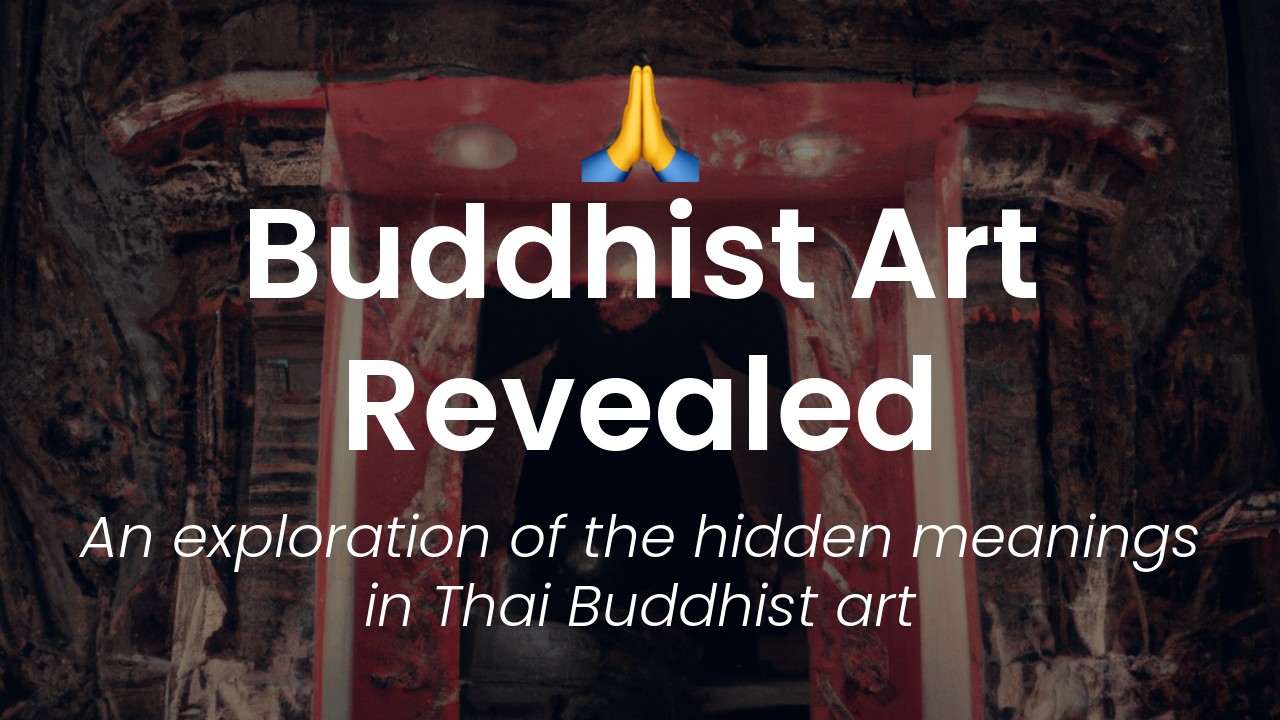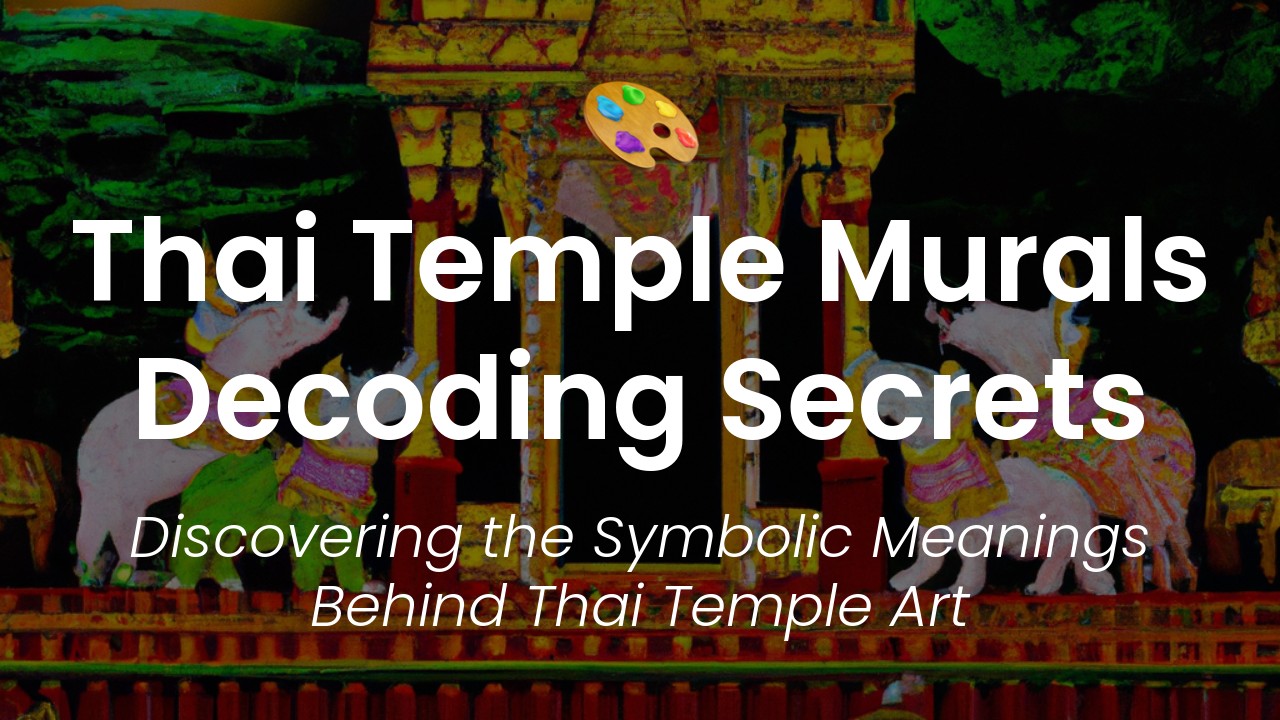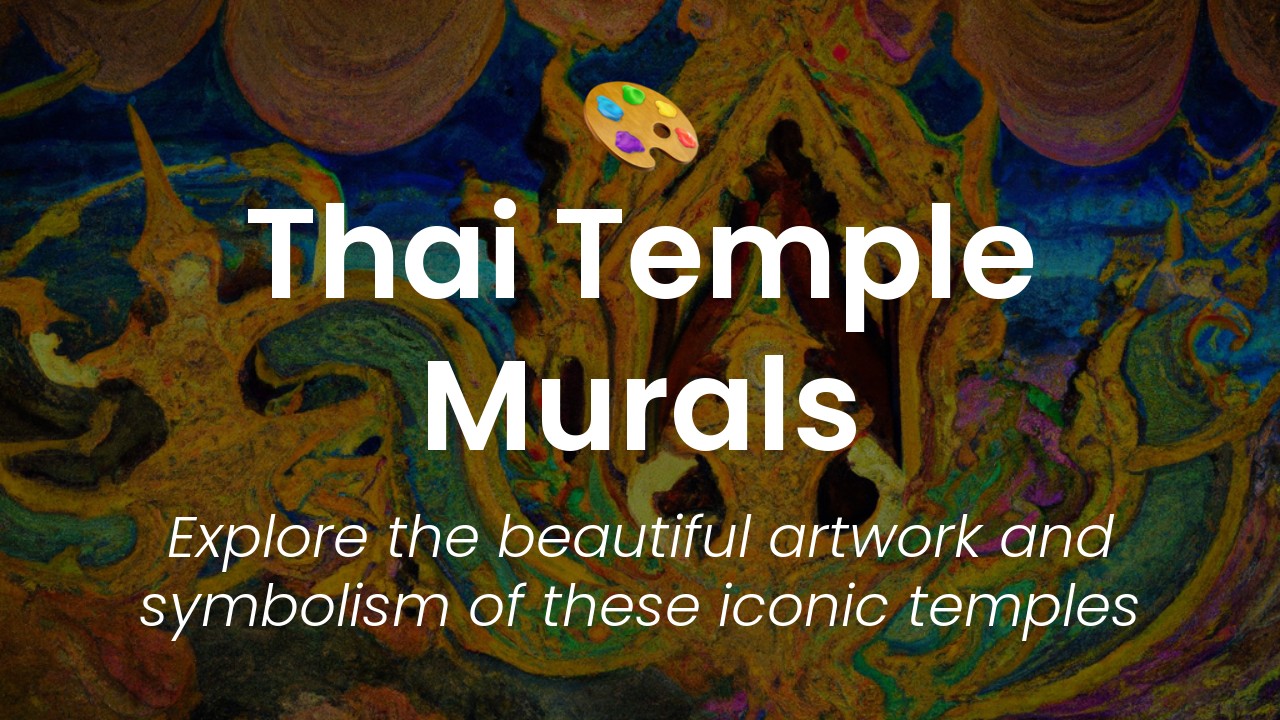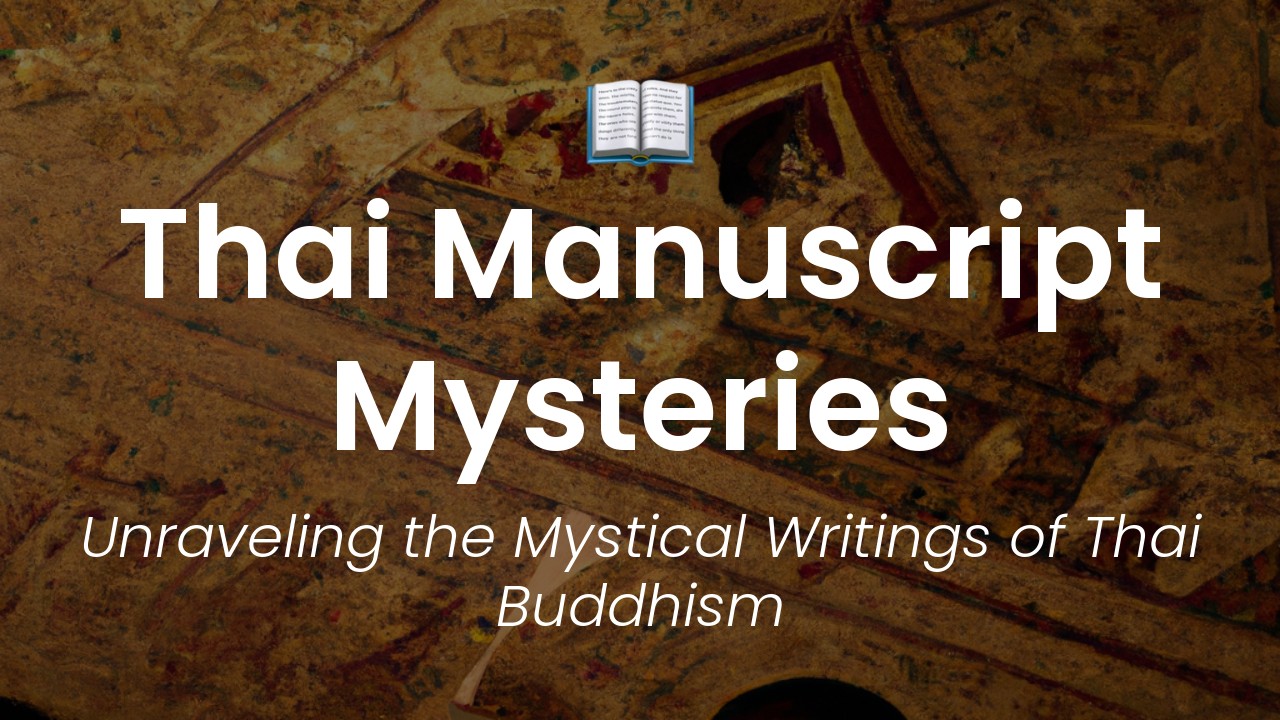As a Thai woman, I have always been fascinated by the rich culture and traditions of my country. One aspect that particularly interests me is the art and iconography associated with Buddhism that can be found throughout Thailand. Buddhist art is an intricate blend of symbolism and religious teachings that has been passed down through generations. It's a powerful way to communicate ideas and values that transcend language and cultural barriers.
In Thailand, Buddha images are everywhere. From the most imposing temple complexes to small shrines on the street, they serve as a reminder of the Buddhist way of life. However, behind the elegant lines, delicate carvings, and serene expressions, there lies a deeper meaning and message. Buddhist art in Thailand is not just about depicting Buddha's life but also about conveying a visual language of religious and philosophical concepts.
In this blog post, I will be shedding light on the symbolism and hidden meanings behind Buddhist art and iconography in Thailand. I will be exploring some of the most common symbols such as the lotus flower, the eight-spoked wheel, the Bodhi tree, and others that are used in Thai temples, paintings, and sculptures. Moreover, I will delve into the different styles of Buddhist art and how they reflect the different periods of Thai history and culture. Join me as we unlock the secrets of this ancient and fascinating art form!
The History of Buddhist Art in Thailand
Buddhism and the creation of Buddhist art are deeply intertwined with Thai culture and history. Early Thai Buddhist artworks, dating back to the 7th century, were heavily influenced by Indian and Sri Lankan art styles. Buddhist art developed as an expression of religious devotion and was often commissioned by royalty, nobility, and the wealthy middle class.
The art styles of the different periods of Thailand's history reflect the various political and cultural influences that shaped the country. The earliest surviving works of Thai Buddhist art are the ancient stone carvings and rock inscriptions from the Dvaravati period (7th-11th century CE). These artworks, discovered in the central region of the country, depict scenes from the life of the Buddha and Buddhist deities.
The Khmer Empire, which ruled over present-day Cambodia, Thailand, and Vietnam from the 9th to 13th centuries, left a lasting impact on Thai art and architecture. The iconic temple complex of Angkor Wat in Cambodia is an example of Khmer architecture and played a significant role in the development of Thai temple architecture.
The Sukhothai period (13th-15th century CE) is considered the golden age of Thai art and culture. During this era, Thai art evolved into a distinct style, influenced by the Mon and Khmer cultures. Sukhothai Buddhist art is characterised by a graceful and elegant style that emphasises simplicity, naturalism, and symmetry.
The Significance of Lotus Flowers in Buddhist Art
The lotus flower is a significant symbol in Buddhist art and culture. In Buddhist scripture, the lotus symbolises purity, spiritual enlightenment, and rebirth. The lotus flower grows out of the murky and muddy waters, but blooms into a beautiful and pure blossom.
In Thai Buddhist art, the lotus flower is depicted in a variety of ways. The most common depiction is the Buddha sitting on a lotus throne. The lotus blossom represents the purity of the Buddha's mind while the throne symbolises his enlightenment.
The lotus flower is also used as a decorative element in Thai Buddhist temples and artwork. Buddhist statues are often surrounded by lotus flowers, and the petals of the lotus are used in intricate designs and patterns.
The Symbolic Importance of the Elephant in Buddhist Art
The elephant is a significant symbol in Thai Buddhist art and culture. In Buddhist scripture, the elephant symbolises strength, stability, and wisdom. It is also associated with the Buddha's birth and the white elephant that appeared in his mother's dream.
In Thai Buddhist art, the elephant is often depicted as a guardian or protector of the Buddha and his teachings. Elephants can be seen in sculpture, paintings, and other forms of artwork. The most famous depiction of elephants in Thai Buddhist art is the Emerald Buddha, where the Buddha is seated on the back of a three-headed elephant.
The Meaning Behind the Buddha's Mudras
The Buddha's mudras are hand gestures that have specific meanings in Buddhist art and culture. The mudras are symbolic representations of different aspects of the Buddha's teachings and his life.
The most common mudra in Thai Buddhist art is the Bhumisparsha mudra, also known as the Earth-touching mudra. This mudra is depicted with the Buddha's right hand touching the earth and represents the moment of his enlightenment when he called upon the earth to witness his achievement.
Another common mudra is the Dhyana mudra, also known as the Meditation mudra. The Buddha is depicted with both hands resting on his lap, palms facing upwards. This mudra represents the Buddha's meditation and teachings on the nature of reality.
The Power of Mandalas in Thai Buddhist Art
Mandalas are intricate and colourful geometric designs used in Buddhist art and culture. Mandalas are used as a tool for meditation and focus and represent the universe and its constant change and impermanence.
In Thai Buddhist art, mandalas are often used as decorative elements in temples and artwork. They are also used as an aid to meditation, with worshippers focusing on the intricate details of the mandala to bring about inner calm and mindfulness.
The Representation of Rebirth in Thai Buddhist Art
The concept of rebirth is central to Buddhist teachings, and it is often depicted in Thai Buddhist art. The idea of rebirth is that beings are born into different forms of existence based on their karma or actions in their previous lives.
In Thai Buddhist art, rebirth is often depicted through the use of animals and mythical creatures. Common creatures in Thai Buddhist art include elephants, monkeys, and garudas. The creatures are symbolic representations of different aspects of the cycle of life and rebirth.
The Importance of Color in Thai Buddhist Art
Color is an essential component of Thai Buddhist art and has specific meanings and symbolism. Each color represents different aspects of Buddhist teachings and the Buddha's enlightenment.
Gold is a symbol of enlightenment and represents the Buddha's wisdom. Red represents the Buddhas' compassion and love for all beings. Blue symbolises the infinite sky and represents the vastness of Buddha's teachings. Green symbolises growth, harmony and represents balance and renewal.
In conclusion, Thai Buddhist art and culture are a significant part of Thailand's history and identity. The rich and diverse art styles reflect Thailand's political, religious, and cultural influences over the years. The symbols used in Thai Buddhist art are a representation of Buddhist teachings, and they bring clarity and spirituality to the artwork.





